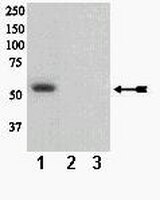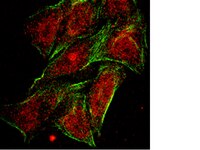07-890 Sigma-AldrichAnti-phospho-PTEN (Ser385) Antibody
Anti-phospho-PTEN (Ser385) Antibody detects level of phospho-PTEN (Ser385) & has been published & validated for use in WB.
More>> Anti-phospho-PTEN (Ser385) Antibody detects level of phospho-PTEN (Ser385) & has been published & validated for use in WB. Less<<Productos recomendados
Descripción
| Replacement Information |
|---|
Tabla espec. clave
| Species Reactivity | Key Applications | Host | Format | Antibody Type |
|---|---|---|---|---|
| H | WB | Rb | Affinity Purified | Polyclonal Antibody |
| Description | |
|---|---|
| Catalogue Number | 07-890 |
| Brand Family | Upstate |
| Trade Name |
|
| Description | Anti-phospho-PTEN (Ser385) Antibody |
| Alternate Names |
|
| References |
|---|
| Physicochemical Information |
|---|
| Dimensions |
|---|
| Materials Information |
|---|
| Toxicological Information |
|---|
| Safety Information according to GHS |
|---|
| Safety Information |
|---|
| Packaging Information | |
|---|---|
| Material Size | 100 µL |
| Transport Information |
|---|
| Supplemental Information |
|---|
| Specifications |
|---|
| Global Trade ITEM Number | |
|---|---|
| Número de referencia | GTIN |
| 07-890 | 04053252333415 |
Documentation
Anti-phospho-PTEN (Ser385) Antibody Certificados de análisis
| Cargo | Número de lote |
|---|---|
| Anti-phospho-PTEN (Ser385) (Affinity purified Rabbit polyclonal IgG) - 2135061 | 2135061 |
| Anti-phospho-PTEN (Ser385) (Affinity purified Rabbit polyclonal IgG) - 2227099 | 2227099 |
| Anti-phospho-PTEN (Ser385) - NG1828769 | NG1828769 |
| anti-phospho-PTEN (Ser385) - 0604027250 | 0604027250 |








